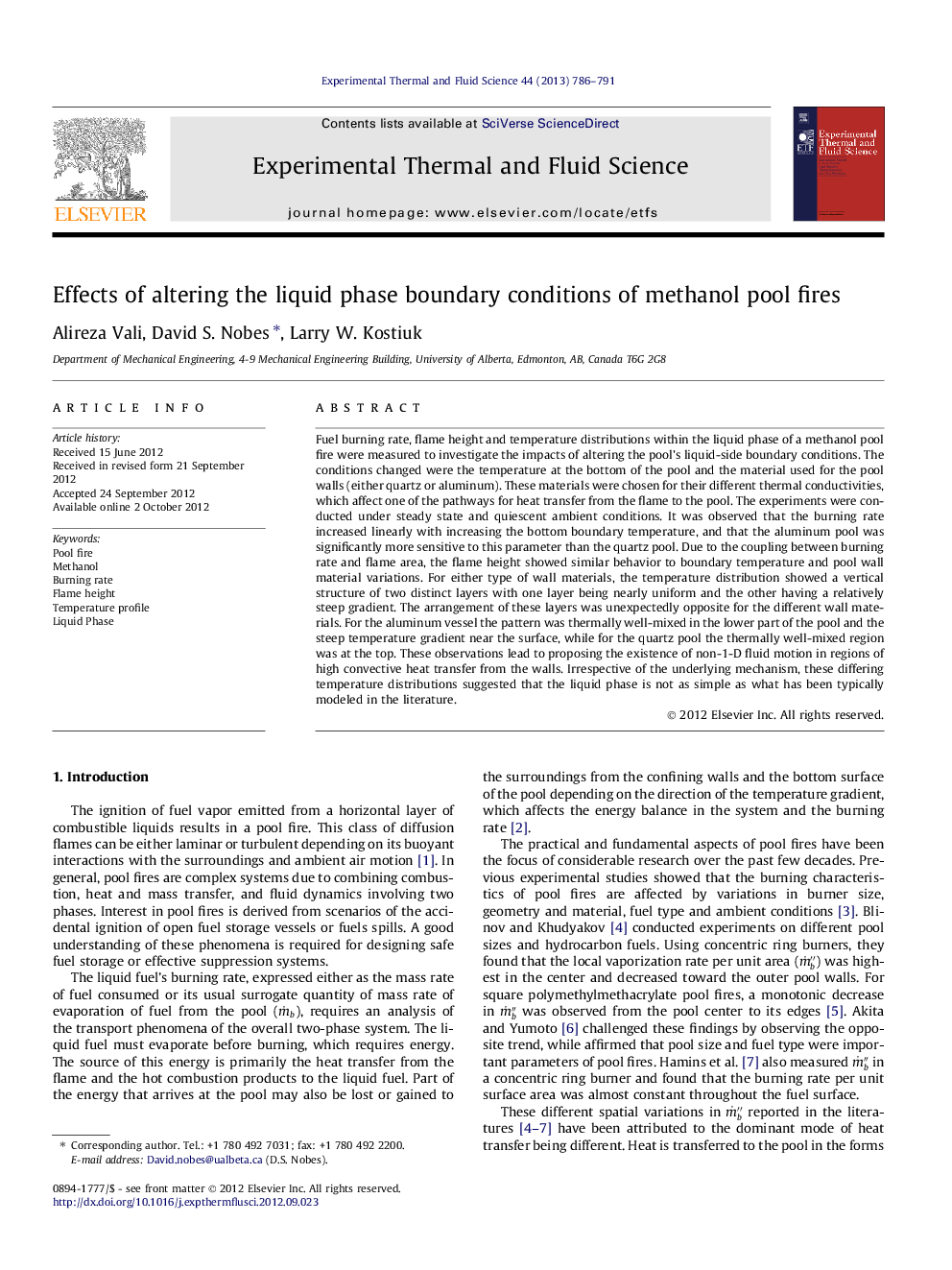| Article ID | Journal | Published Year | Pages | File Type |
|---|---|---|---|---|
| 651569 | Experimental Thermal and Fluid Science | 2013 | 6 Pages |
Fuel burning rate, flame height and temperature distributions within the liquid phase of a methanol pool fire were measured to investigate the impacts of altering the pool’s liquid-side boundary conditions. The conditions changed were the temperature at the bottom of the pool and the material used for the pool walls (either quartz or aluminum). These materials were chosen for their different thermal conductivities, which affect one of the pathways for heat transfer from the flame to the pool. The experiments were conducted under steady state and quiescent ambient conditions. It was observed that the burning rate increased linearly with increasing the bottom boundary temperature, and that the aluminum pool was significantly more sensitive to this parameter than the quartz pool. Due to the coupling between burning rate and flame area, the flame height showed similar behavior to boundary temperature and pool wall material variations. For either type of wall materials, the temperature distribution showed a vertical structure of two distinct layers with one layer being nearly uniform and the other having a relatively steep gradient. The arrangement of these layers was unexpectedly opposite for the different wall materials. For the aluminum vessel the pattern was thermally well-mixed in the lower part of the pool and the steep temperature gradient near the surface, while for the quartz pool the thermally well-mixed region was at the top. These observations lead to proposing the existence of non-1-D fluid motion in regions of high convective heat transfer from the walls. Irrespective of the underlying mechanism, these differing temperature distributions suggested that the liquid phase is not as simple as what has been typically modeled in the literature.
► The liquid-side boundary conditions have profound effects on the pool fire burning. ► Key boundary conditions are pool bottom temperature and conductivity of wall material. ► Burning rate is linearly dependent on pool bottom temperature. ► Vertical temperature gradients in pool shows highly non-uniform stratifications. ► Structure of non-uniform temperature stratifications depend on wall conductivity.
